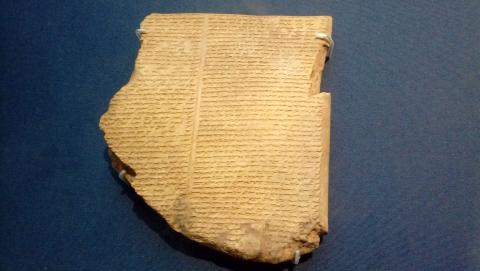Flood Tablet

The cuneiform text on this clay tablet, now displayed at London's British Museum, is startlingly similar to the biblical story of Noah and his Ark in the Book of Genesis. When George Smith, an assistant in the British Museum, first read this inscription in 1872 he 'jumped up and rushed about the room in a great state of excitement, and, to the astonishment of those present, began to undress himself.'
The tablet, known now as King Ashurbanipal's Flood Tablet, describes how the gods sent a flood to destroy mankind. Ut-napishtim was warned in secret by the god Ea to build a boat to ensure the survival of humans and animals. Birds were released before the boat landed safely on Mount Nitsir in northern Assyria. Versions of this story are known from at least 1000 years earlier.
Secular scholars have argued that the Biblical account merely copied and rewrote the ancient Mesopotamian accounts, of which this is a good example. We Christians can see that they are in fact separate, independent accounts of the same global flood, in which God rescued one family. Everyone has heard the story of Noah and his ark, but, like the gospel, few will deign to believe it, even though the evidence is clearly there.
- Log in to post comments


 Sunday Worship 10.45am & 6.00pm
Sunday Worship 10.45am & 6.00pm